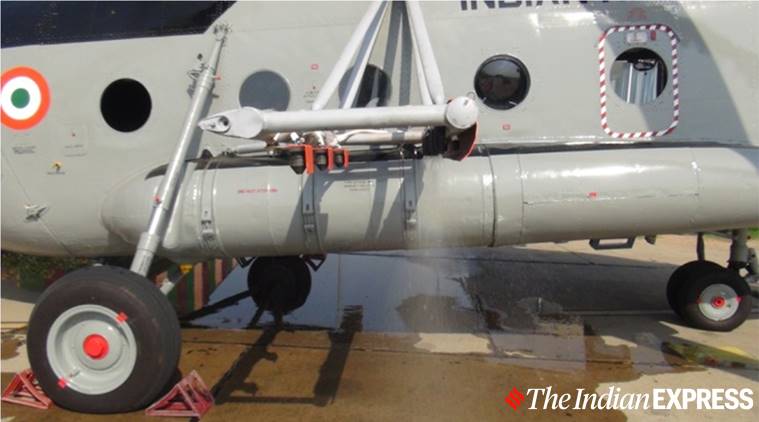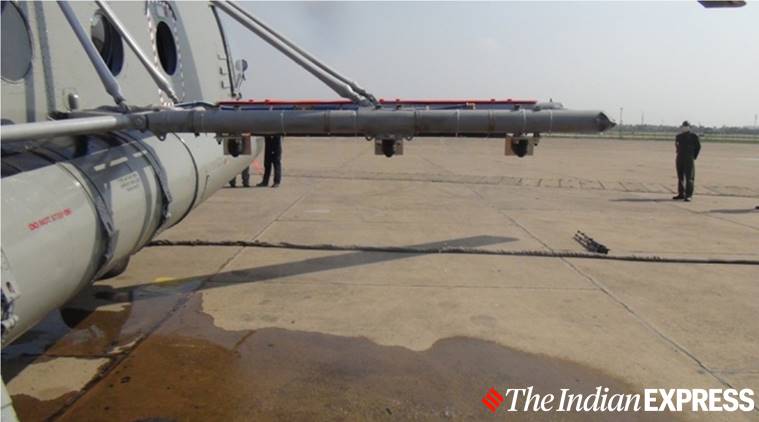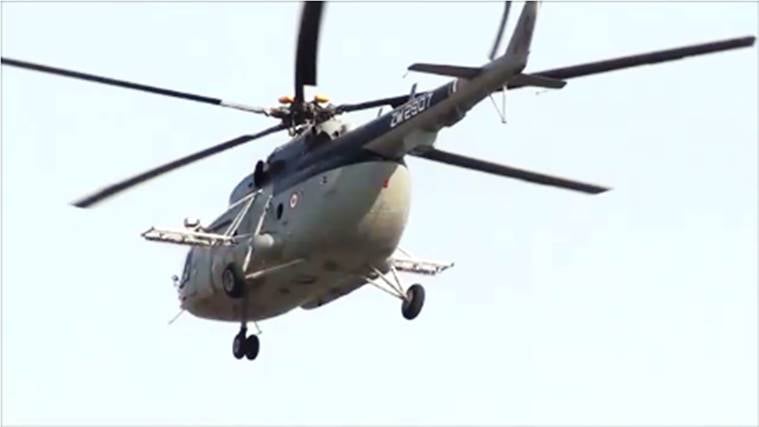 Indigenously developed Airborne Locust Control Systems for MI-17 helicopter.
Indigenously developed Airborne Locust Control Systems for MI-17 helicopter.
Chandigarh based 3 Base Repair Depot (BRD) of the Indian Air Force (IAF) and the city-based Central Scientific Instruments Organisation (CSIO) have developed an indigenous control system for two Mi-17 helicopters for spraying atomised pesticides to arrest locust breeding.
IAF officials Wednesday said that anticipating a locust attack, the Ministry of Agriculture had signed a contract with M/s Micron, UK in May this year to modify two Mi-17 helicopters for spraying atomised pesticide. Due to the Covid-19 pandemic, the UK based firm would be able to manufacture and supply the modification kit to IAF only from September 2020 onward for system integration and testing.
However, in view of locust attacks being reported across many states, the IAF tasked 3 Base Repair Depot to indigenously design and develop an Airborne Locust Control System (ALCS) for Mi-17 helicopters.
 The control system has been designed at Chandigarh based 3 Base Repair Depot (BRD).
The control system has been designed at Chandigarh based 3 Base Repair Depot (BRD).
Using all indigenous components, the atomised airborne spraying of pesticide has been successfully achieved in air through a configuration of nozzles mounted both sides on external trusses of a Mi-17 helicopter. The nozzles used for the purpose are a mix of commercially available nozzles as well as the nozzles developed by CSIO, Chandigarh.
The pesticide Malathion, in appropriate concentration, would be filled in the internal auxiliary tank of 800 liters capacity fitted inside the helicopter. It would then be pumped into the nozzles by using an electrical pump as well as compressed air, achieving nearly 40 minutes of spaying duration in the infected zone covering an area of approximately 750 hectares in each mission.
 The modified Mi-17 helicopters would be able to spray for 40 minutes in the infected zone covering an area of approximately 750 hectares in each mission.
The modified Mi-17 helicopters would be able to spray for 40 minutes in the infected zone covering an area of approximately 750 hectares in each mission.
A team of test pilots and test engineers of Aircraft and Systems Testing Establishment, Bengaluru, have successfully carried out ground and airborne trials of ALCS on a modified Mi-17 helicopter. The system is being offered for use with Malathion for employment in the locust control operation.
IAF officials say that being an indigenously developed system, the ALCS would offer inherent advantages of in-house maintenance, future upgradeability, saving of foreign exchange, and help in making the country self-reliant in aviation-related technology.